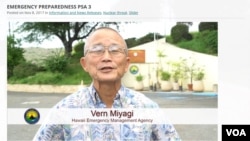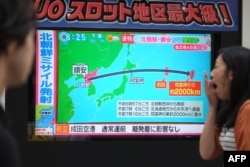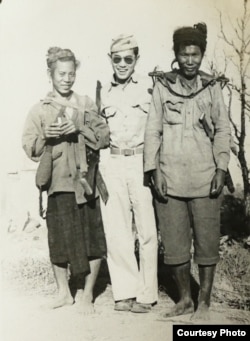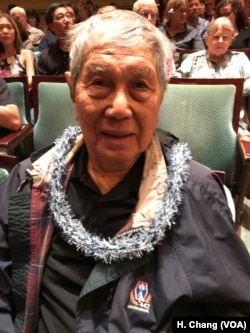As tensions escalate between North Korea and the United States, Hawaii finds itself on the frontlines in preparing for a nuclear attack. Whether or not North Korea has developed the capability of hitting the islands with a missile, state officials aren’t taking any chances.
Starting in December, Hawaii will be testing its “Attack Warning” siren for the first time since the Cold War. The state is adding the signal to its monthly “Attention Alert” test, which warns people of an incoming tsunami or hurricane.
While the wailing siren could be used to warn of a nuclear strike from North Korea, Vern Miyagi, administrator of the Hawaii Emergency Management Agency (HI-EMA), said he thinks an attack is unlikely.
"If North Korea launches against us or our allies, the retaliation would be complete and they would defeat North Korea’s ambition to continue its regime. So if they did launch an attack against us, the regime would be probably end," said Miyagi.
Nevertheless, HI-EMA is ramping up efforts to educate the state’s 1.4 million residents and also visitors on how to prepare for a nuclear attack.
"Hawaii is a likely target, ‘cause we’re in the Pacific, we’re closer in to North Korea than most of the continental United States,” Miyagi pointed out, “so it’s something we need to prepare for. As we track the news and we see the tests, both missile launches and nuclear tests, it’s the elephant in the room. We can’t ignore it."
That’s why the state has posted guidelines online to prepare people for a nuclear attack. It’s also getting the word out through community meetings and public service announcements.
Echoes of Dec. 7, 1941
World War II veteran Ted Tsukiyama recalled hearing the air-raid warning sirens after Japan bombed Pearl Harbor.
"Sirens were installed all over the city after the war started. And they would test them every now and them. I remember hearing the sirens going off. The radio would give us a warning, ‘this is only a test,’ don’t get alarmed and all that," said Tsukiyama.
Tsukiyama, who’s now in his late 90s, said he isn’t surprised the sirens are coming back because Hawaii has long been a defense outpost. It’s home to the U.S. Pacific Command, the military’s headquarters for the Asia-Pacific region. "I suppose that’s necessary as a precaution, but I don’t think North Korea is gonna attack. They’d be foolish to threaten South Korea, or Japan, or the U.S.," he said.
Make a plan
U.S. officials estimate a North Korean missile could reach Hawaii in about 20 minutes. It would take 5 minutes for authorities to determine its target, which would leave about 12-15 minutes to warn the public.
Despite the state’s public outreach and education efforts, Miyagi said there are still misconceptions.
"The first one that I’ve heard is that we shouldn’t prepare, we shouldn’t plan because it’s never going to happen, so we’re wasting our time. But again, when you see all of the things in the news, and the tests, missile launches, I can’t ignore it. So we have to continue planning as if it’s there and it may happen.”
The second misconception, he said, is fatalistic. “’There’s no use preparing, no use planning because if it’s a nuclear attack we’re all going to die.’ But based on what the threat is right now, if there is an impact there’ll be many, many survivors, 80 percent, 90 percent survivors."
So Miyagi encouraged everyone to have a plan and know where to “shelter in place” ahead of time. Officials also recommend having enough food and water to survive for 48 hours, and supplies to last up to 14 days… just in case.











